
Current Affairs is the most important area in all competitive exams. But the difficulty level is very high. That’s why; many aspirants get confused, how to select Current Affairs for Preparation of Competitive Examination? In this Post, Daily Current Affairs 26 May 2023, we have tried to cover each and every point and also included all important facts from National/ International news that are useful for upcoming competitive examinations such as UPSC, SSC, Railway, State Govt. etc.
So, here is the Top News of the Day for 26 May 2023 to help you prepare the Latest Current Affairs part. After reading this section, you can successfully attempt Current Affairs Quiz.
Current Affairs for Competitive Exam – 26 May 2023
GRSE Launches Innovation Nurturing Scheme For Ideas In Ship Design, Construction

Garden Reach Shipbuilders and Engineers (GRSE) Ltd, a defence PSU (Public Sector Undertaking) based in Kolkata, has created an innovation fostering scheme to solve issues in the ship design and building business. The GRSE Accelerated Innovation Nurturing Scheme – 2023 (GAINS) aims to generate a large number of ideas and support their development through a two-stage process.
Objective
GAINS 2023’s major goal is to find and promote the development of new solutions for technological improvements in shipbuilding, notably from startups. GRSE plans to use the ecosystem to address both current and emerging ship design and building difficulties. The focus areas for GAINS 2023 include artificial intelligence, renewable energy, energy efficiency, and efficiency enhancement.
Launching
The scheme was launched by G Surya Prakash, the youngest officer of GRSE and assistant manager in the finance department. Rajeev Chandrasekhar, Minister of State for Electronics and IT and Skill Development and Entrepreneurship, spoke at the virtual event, emphasising that the collaboration between GRSE and innovators is a “win-win” situation that will shape the future of technology and innovation in the ship design and construction industry.
Open innovation, a well-established and effective approach, will be used to gather ideas from outside the organization and create better solutions in a relatively short time. This initiative by GRSE is the first of its kind undertaken by a public sector undertaking to launch a startup challenge. The chairman and managing director of GRSE, Commodore P R Hari (retd), expressed that the aim is to tap into the inherent strength and capabilities of the Indian startup ecosystem to develop technologically innovative solutions.
Features and Functionality
The GRSE Accelerated Innovation Nurturing Scheme – 2023 (GAINS) follows a two-stage process:
- Idea Generation: The scheme invites innovators to participate in an open innovation challenge, encouraging them to submit their ideas. Artificial intelligence, renewable energy, energy efficiency, and efficiency enhancement in ship design and construction are among the ideas’ focal points.
- Idea Selection and Nurturing: From the submitted ideas, a few promising ones will be selected for further development and nurturing. GRSE will provide support, resources, and mentorship to the chosen innovators to help them refine and implement their ideas.
Benefits
The launch of GAINS 2023 brings several benefits to the ship design and construction industry:
- Innovation Boost: By engaging with startups and encouraging open innovation, GRSE aims to generate a large number of innovative ideas. This will assist the sector in overcoming current obstacles and staying ahead of emerging trends.
- Technological Advances: The scheme’s focus areas, including artificial intelligence, renewable energy, and energy efficiency, aim to promote technological advancements in shipbuilding. This will lead to more sustainable and efficient ships.
- Collaboration Opportunities: The partnership between GRSE and innovators provides an opportunity for collaboration, knowledge sharing, and mutual growth. It fosters a collaborative ecosystem that can drive innovation and enhance the ship design and construction industry.
Vision
The launch of GAINS 2023 reflects GRSE’s vision to foster innovation and leverage the Indian startup ecosystem for technological advancements in ship design and construction. By actively engaging with innovators and encouraging open innovation, GRSE aims to create a collaborative environment that accelerates the development and implementation of cutting-edge solutions in the industry. This vision aligns with the government’s focus on promoting innovation and entrepreneurship in India’s defence sector, driving the country’s progress toward self-reliance and global competitiveness.
Key Facts About India’s New Parliament House
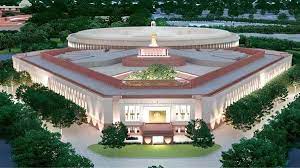
On Sunday, May 28, Prime Minister Narendra Modi will inaugurate the new Parliament building, which will feature fine artwork and a ceremonial sceptre called ‘Sengol’ among its many features. Constructed at a cost of ₹971 crore, the new complex stands as a symbol of India’s progress, reflecting the aspirations of the nation’s 1.35 billion citizens. Its innovative triangular design optimizes space utilization and fosters efficient governance.
Here are the key facts about the new Parliament House:
- Triangular Design for Optimum Space Utilization: The new Parliament House has a distinctive triangular design that maximises space utilisation inside the complex. This design allows for maximum functionality and accommodates larger legislative chambers.
- Lok Sabha: Inspired by the Peacock: The Lok Sabha, based on India’s national bird, the peacock, will have an expanded seating capacity. With 888 seats, it will accommodate nearly three times the current capacity. The Lok Sabha hall will also have 1,272 seats available for combined sessions.
- Rajya Sabha: Inspired by the Lotus: The Rajya Sabha, inspired by the national flower, the lotus, will have 348 seats. The revised design provides for potential expansions in Rajya Sabha membership, ensuring adequate space in the House.
- Constitutional Hall: A notable addition to the new Parliament House is the Constitutional Hall, located in the center of the complex. This hall will serve as a significant space within the building.
- No Central Hall: Unlike the old Parliament House, the new complex will not feature a Central Hall. The low capacity of the previous Central Hall necessitated additional chairs during joint sessions, creating security challenges. The new Parliament House’s Lok Sabha Hall is built to easily accommodate combined sessions.
- Earthquake-resistant Construction: The new Parliament building is designed to withstand earthquakes. As Delhi is now in Zone 4, characterized by a higher earthquake risk, the new structure will be fortified to endure strong shocks in Zone 5.
- Modern Facilities: Each seat in the new Parliament House will be equipped with a multimedia display in front, providing modern amenities to members of Parliament. This enhancement will enhance the legislative experience and facilitate communication.
- Eco-friendly Construction: The new Parliament House adopts eco-friendly practices, utilizing green construction materials. The structure includes energy-saving systems that reduce electricity consumption by 30%. The design also includes rainwater harvesting and solar power producing devices.
- Enhanced Committee Rooms: The new Parliament House will feature an increased number of committee rooms, equipped with sophisticated audio-visual systems. These upgrades will facilitate the functioning of parliamentary committees.
- Media Facilities: Special facilities will be provided for the media, including 530 seats dedicated to media personnel. Galleries will be available for the general public to witness parliamentary proceedings, ensuring a clear view of the house from every seat.
- Public-friendly Design: Efforts are underway to make the new Parliament House more accessible to the public. The Public Gallery and Central Constitutional Gallery will include two separate entrances for children, the elderly, and the disabled.
Ministry Of Ayush And Minority Affairs Collaborate For Development Unani Medicine System
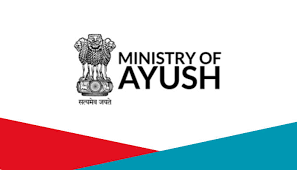
The Ministries of Ayush and Minority Affairs have joined forces to promote and aid in the growth of India’s Unani System of Medicine. The Ministry of Minorities Affairs has allocated RS 45.34 crore through the Pradhan Mantri Jan Vikas Karyakram (PMJVK), a centrally sponsored scheme. Unani Medicine will be upgraded with the support of this scheme in Hyderabad, Chennai, Lucknow, Silchar, and Bengaluru. The grant approved by the Ministry of Minorities will help in the establishment of various facilities of Unani Medicine in the mentioned locations.
Ministry of Ayush and Minority Affairs Collaborate for Development Unani Medicine System
A grant of Rs 35.52 crore has been approved by the Central Council for Research in Unani Medicine (CCRUM), while a grant of Rs 9.81 crore has been approved by the National Institute of Unani Medicine (NIUM) Bengaluru. A center will be established in Hyderabad for the fundamental research in Unani Medicine at the National Research Institute of Unani Medicine for Skin Disorders at a cost of Rs 16.05 crore.
The Ministry has suggested a preclinical laboratory facility at the Regional Research Institute of Unani Medicine in Chennai for Rs 8.15 million. Rs 8.55 crore has been allotted for a center of Ilaj bit Tadbeer for musculoskeletal disorders at the Central Research Institute of Unani Medicine, Lucknow and Rs 2.75 has been allotted for a center of Ilaj bit Tadbeer for skin and lifestyle disorders at the Regional Research Institute of Unani Medicine, Silchar. The NIUM Bengaluru has been allotted Rs 5.55 crore for the establishment of a Vishram Girah for patient attendants and Rs 4.26 crore for a skill center of model Unani Cosmetics care, small-scale Unani pharmacy, and Unani crude drug storage.
On March 2, 2023, the Employment Committee of the Ministry of Minority Affairs met to discuss the proposals, and Rs 4.86 crore was paid to the CCRUM as the first installment, or 25% of the total sanctioned cost of its three projects. The CCRUM grant for the Hyderabad and NIUM projects will be released after the DPRs are approved and the other technicalities are finalized.
About Unani Medicine
Unani medicine is a traditional system of healing and health maintenance observed in South Asia. The origins of Unani medicine are found in the doctrines of the ancient Greek physicians. As a field, it was later developed and refined through systematic experiments by the Arabs.
The Central Council for Research in Unani Medicine (CCRUM), a government-sponsored initiative, aided in the translation of classical heritage, the organisation of clinical trials, the improvement of drug standardisation, and the investigation of toxicological and phytopharmacological properties of natural products long used by Unani doctors.
Indian-Origin Sikh Becomes First Turban-Wearing Lord Mayor Of UK City Coventry

Coventry, a city in the West Midlands of the United Kingdom, has appointed Jaswant Singh Birdi as its new Lord Mayor. As an Indian-origin Sikh councillor, Birdi’s appointment marks a significant milestone in the city’s history. Taking up the office of Lord Mayor entails becoming Chairman of the City Council. Birdi will be Coventry’s non-political and ceremonial leader in his new role.
A Momentous Achievement for Jaswant Singh Birdi
Jaswant Singh Birdi, originally from Punjab, India, has made history by becoming the first Sikh councillor to hold the prestigious position of Lord Mayor in Coventry. The city, known for its diverse community, has embraced Birdi’s appointment as a symbol of progress and inclusivity. His ascendancy to the role of Lord Mayor is a testament to the city’s commitment to promoting diversity and recognizing the contributions of individuals from different backgrounds.
Continuing the Legacy of Service
Jaswant Singh Birdi follows in the footsteps of Councillor Keven Maton, whom he served as Deputy Lord Mayor for the past 12 months. Birdi is well-prepared to accept the Lord Mayor’s responsibilities and carry on the legacy of his predecessor, thanks to his expertise and dedication to public service. Building upon the achievements of Councillor Maton, Birdi aims to make a positive impact on the city of Coventry during his tenure.
The Symbolic Chains of Office
In a special ceremony held at Coventry Cathedral, Jaswant Singh Birdi was formally presented with the Chains of Office. The Chains of Office are traditional regalia worn by the mayor and symbolize the authority and responsibility associated with the position. This momentous occasion marked the official start of Birdi’s time as Lord Mayor of Coventry. Dignitaries, community leaders, and people attended the ceremony to celebrate the city’s momentous milestone.
A Vision for Coventry’s Future
As the non-political, ceremonial head of Coventry, Jaswant Singh Birdi envisions a future for the city that embraces diversity, inclusivity, and progress. He aims to promote unity among Coventry’s various communities and foster an environment of understanding and cooperation. Birdi’s term as Lord Mayor will provide him with a platform to champion social causes, encourage community engagement, and enhance the city’s reputation on a national and international scale.
AI Supercomputer ‘Airawat’ Puts India Among Top Supercomputing League

The AI Supercomputer ‘AIRAWAT’, located at C-DAC, Pune, got a remarkable global rating of 75th on the coveted Top 500 Global Supercomputing List at the International Supercomputing Conference (ISC 2023) in Germany. This accomplishment establishes India as a leading nation in the field of AI supercomputing. ‘AIRAWAT’ is part of the Government of India’s National Program on AI and represents a significant stride forward in the country’s AI capabilities.
The AIRAWAT PoC of 200 AI Petaflops integrated with PARAM Siddhi – AI of 210 AI Petaflops gives a total peak compute of 410 AI Petaflops Mixed Precision and sustained compute capacity of 8.5 Petaflops (Rmax) Double Precision. The peak compute capacity (Double Precision, Rpeak) is 13 Petaflops.”
Overview of the news:
Artificial Intelligence is the most promising technology in the digital age. India has a strong ecosystem and competitive advantage for AI due to its massive data availability, strong digital economy and skilled workforce. India has been working on Applied AI with a focus on Natural Language Processing, Image Procession, Pattern Recognition, Agriculture, Medical Imaging, Education, Health Care, Audio Assist, Robotics, and generating solutions for strategic industries. Proof of Concept (PoC) AI Research Analytics and Knowledge Dissemination Platform (AIRAWAT) of 200 AI Petaflops Mixed Precision peak compute capacity is currently funded by MeitY and implemented by C-DAC, Pune.
Infosys Launches Topaz, An Ai-First Set Of Services, Solutions, And Platforms

Infosys, a leading IT services company, has launched Topaz, a comprehensive suite of services, solutions, and platforms that harness the power of generative Artificial Intelligence (AI) technologies. Topaz is built on Infosys’ applied AI architecture, which enables the development of an AI-first core that improves individuals’ and organisations’ capacities to create cognitive solutions and accelerate value creation.
Amplifying Potential and Embracing Responsible AI
With an AI-first approach, Topaz aims to unleash the potential of humans, enterprises, and communities, enabling them to tap into the next wave of opportunities arising from unprecedented innovations, connected ecosystems, and increased efficiencies. Infosys emphasises its commitment to a “responsible by design” approach in AI-powered products, providing unwavering ethics, trust, privacy, security, and compliance.
Harnessing the Power of Infosys Cobalt and Data Analytics
Topaz integrates the capabilities of Infosys Cobalt cloud and data analytics, leveraging their collective power to drive AI-enabled business transformations. Topaz enables businesses to uncover growth potential and derive value from their data assets by providing customised solutions and simple experiences.
Real-World Applications and Success Stories
Infosys highlights the successful implementation of Topaz in various sectors. For instance, a food and beverages chain utilized Topaz to autonomously connect disparate data signals from new partners, resulting in an exceptional off-store consumer experience with an impressive accuracy rate of over 95 percent. In addition, a national railway business used Topaz to create a smart hub, supporting flexible value chains and optimising functions such as logistics.
Infosys’ AI Transformation and Future Outlook
Not only is Infosys offering Topaz to its clients, but it is also embracing an AI-first approach for its own transformation. By applying Topaz internally, Infosys aims to accelerate its market offering evolution, enhance enterprise transformation, and drive incremental value through micro-changes that improve client service, reimagine business processes, and boost productivity.
“Infosys Topaz is helping us amplify the potential of people – both our own and our clients’,” said Infosys CEO Salil Parekh. We are seeing strong interest from our clients for efficiency and productivity-enhancing programs, even as businesses are keen to secure their future growth.
Goa Signed Mou With Uttarakhand For Strengthening Tourism Cooperation
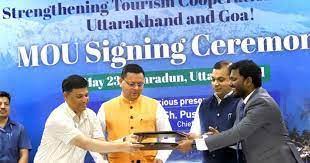
The governments of Goa and Uttarakhand have collaborated and signed a Memorandum of Understanding (MoU) to improve the tourism landscapes of both states. The MoU was signed in the presence of Goa’s Minister for Tourism, IT, E&C, Printing and Stationery, Rohan Khaunte, and Uttarakhand’s Chief Minister, Pushkar Singh Dhami.
The MoU signed between Goa and Uttarakhand aims to promote bilateral cooperation in the travel and tourism sector and facilitate travel between the states. It is aimed to increase the number of tourists visiting Goa and Uttarakhand respectively. The signing of this MoU is a significant step towards promoting tourism in Goa and Uttarakhand and showcasing India’s rich cultural diversity to the world, aligned with the ‘Dekho Apna Desh’ initiative launched by Prime Minister Narendra Modi.
Rohan Khaunte informed that this MoU with Uttarakhand Tourism underlines the focus on spirituality, wellness, and eco-tourism. Through this partnership, they are looking forward to showcasing the beautiful, ancient temples of Goa as a part of the circuit connecting ‘Dakshin Kashi’ with ‘Uttar Kashi’. Satpal Maharaj, the Minister of Tourism, Uttarakhand was also present on this occasion and he shared that they are happy to join hands with Goa Tourism and work for the betterment of tourism in both states. This MoU will increase direct flight connectivity and explore joint packages, cultural exchanges, and human resource development opportunities.
Goa Signed MoU with Uttarakhand for Strengthening Tourism Cooperation: Benefits
Both states would gain from direct flight connectivity between Uttarakhand and Goa, which reduces travel time from 7 hours to 2.5 hours, making it easier for tourists to visit both states. The tourism departments of both states will also work on joint packages to promote various tourism products, including adventure tourism activities, ecotourism, spiritual tourism, and wellness tourism. Both Goa and Uttarakhand have unique cultural identities that will be showcased to offer tourists a glimpse into India’s diverse cultural heritage. Through different cultural exchange programmes, roadshows, festivals, and events, the MoU will open the path for cultural exchange between the two states, displaying local cuisines, folk art, and handicrafts.
RN Jayaprakash Re-Elected As President Of Swimming Federation Of India
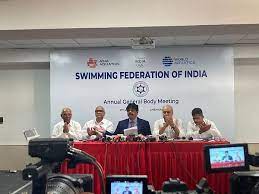
At the Swimming Federation of India’s (SFI) annual general meeting, R.N. Jayaprakash and Monal D Chokshi were re-elected President and Secretary, respectively. SFI’s goal over the next four years will be to increase grassroots engagement by hosting camps and coaches’ clinics at the state level.Jayaprakash was elected unanimously as the president of SFI in an Annual General Body Meeting and Election held on Sunday in Chennai. The event was held with the aim to facilitate the election of new office-bearers who will steer the future of swimming in India.
The Annual General Body (AGM) Meeting is a significant occasion where the members of the Swimming Federation of India gather to discuss the progress and achievements of the past year.
The Federation has established key emphasis areas for its Mission 2028, which aims to advance swimming development throughout the country. The establishment of a National Database of Swimmers, Coaches, and Academies, the implementation of an Indigenous Coaches Education & Certification Pathway, the development of a systematic Talent Scouting Structure and Protocols, the review of the Competition Structure, and the development of a National Talent Pool & Athlete Development Pathway are among the focus areas.
Important takeaways for all competitive exams:
- Swimming Federation of India Headquarters: Ahmedabad, Gujarat;
- Swimming Federation of India Affiliation: World Aquatics;
- Swimming Federation of India Founded: 1948;
- Swimming Federation of India Membership: 30 State/UT associations;
- Swimming Federation of India CEO: Virendra Nanavati.
Mission Karmayogi: Annual Capacity Building Plan By MOHFW
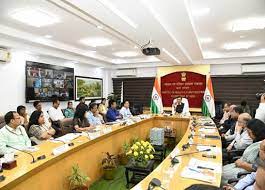
Why the Scheme is in News?
Union Minister of Health and Family Welfare, Dr. Mansukh Mandaviya, emphasized the significance of Capacity Building Plans in promoting focused output by a competent workforce and fostering a work culture within organizations. These plans act as “highways” for individuals to collaborate as a team with common goals and vision.
Dr. Mandaviya made these remarks during the launch of the Annual Capacity Building Plan for civil servants of the Ministry of Health and Family Welfare. The event was attended by Dr. Bharati Pravin Pawar, Union Minister of State for Health and Family Welfare, who joined virtually.
Introduction
Dr. Mandaviya recalled the inspiration provided by the Honorable Prime Minister during the launch of Mission Karmayogi, which aims to enhance the capabilities of civil servants across various government organizations. He emphasized that India has immense potential, and the key is to harness that potential to achieve the desired outcomes.
The Union Health Minister commended the dedicated efforts of all stakeholders and stressed the need to renovate and revitalize the government’s capacity building system. This initiative is envisioned as a means to strengthen the civil service machinery. Highlighting the importance of capacity building, he emphasized that the focus should always be on improving the quality of output.
About the Annual Capacity Building Plan (ACBP): Mission Karmayogi
The Annual Capacity Building Plan (ACBP) is a comprehensive strategy plan meant to aid in the growth and improvement of individuals’ and Ministries/Departments/Organizations’ (MDOs’) skills and capacities. The plan has been created by the Capacity Building Commission in close collaboration and consultation with the Mission Karmayogi Cell of the Health Ministry, all divisions within the department, and following a thorough Training Needs Analysis (TNA) for the Ministry of Health and Family Welfare (MoHFW).
Mission Karmayogi
The Union Minister urged training institutions to focus on enhancing their own capacity building efforts before imparting knowledge to others. He also emphasized that by improving their capacity, individuals can gain self-confidence and achieve better outcomes. Dr. Bharati Pravin Pawar emphasized that while all civil services personnel play a crucial role in delivering important services to the public, their involvement in health services is particularly vital to ensure that essential health services reach every citizen, especially those who need them the most.
Mission Karmayogi: Strategy of Implementation
Shri Rajesh Bhushan, Secretary of the Health Ministry, detailed the ministry’s approach and encouraged training institutes to take the lead in putting it into action. He emphasised that the goal of this programme is to improve officials’ skills and competencies in accordance with the specific needs of various divisions within the ministry.He expressed that the plan aims to ensure that the numerous training institutions across the country don’t operate independently but instead function as a network to provide skills and training to officials. He also acknowledged that the plan is open to refinement and modifications as necessary.
Mission Karmayogi: Goals
- The ACBP is founded on the principle of establishing a network of “competency-driven training and human resource management.”
- It aims to cultivate a new generation of technologically adept, capable, empathetic, and future-ready government officials.
- To attain this goal, the government launched ‘Mission Karmayogi,’ also known as the ‘National Programme for Civil Services Capacity Building (NPCSCB),’ in September 2020.
- As part of this program, a Capacity Building Commission (CBC) was established to oversee the training institutions for civil services and develop Capacity Building Plans (CBPs) for various ministries and departments, including the Ministry of Health and Welfare.
Mission Karmayogi: Benefits
- The Annual Capacity Building Plan outlines a structured approach to enhance civil servants’ competencies.
- This involves the acquisition of domain competences, which entail knowledge and expertise in certain sectors, divisions, and focus areas. It also emphasises behavioural competencies, which include desired behaviours and soft skills, as well as functional competencies, which pertain to the operational components of various divisions.
- The ACBP comprises an annual training plan and a general schedule of activities to be conducted by selected leading training institutions chosen by the Ministry of Defense.
Mission Karmayogi: Vision
The Chairman of the Capacity Building Commission, Shri Adil Zenulbhai, noted that the Hon’ble Prime Minister’s objective is not to force civil workers into capacity building, but to make it appealing enough to draw individuals to develop their best abilities. He emphasized that the Capacity Building Plan is a practical approach that will enhance the quality of work and encourage civil servants to embrace lifelong learning.
Farmers Producers Organisation (FPO): 1100 FPOs have been allocated to National Cooperative Development Corporation (NCDC)

The formation and promotion of Farmer Producer Organizations (FPOs) has gained significant attention in recent years, as it holds immense potential to transform the agricultural landscape. FPOs are essentially collective entities formed by farmers, enabling them to join forces, pool resources, and enhance their bargaining power. The government has granted 1,100 FPOs to the National Cooperative Development Corporation (NCDC) under the central scheme named ‘Formation and Promotion of 10,000 FPOs’ in order to strengthen the cooperative sector and provide comprehensive support to small farmers.
Features and Functionality
FPOs serve as a platform for farmers to come together, share knowledge and experiences, and collectively address common challenges. These organisations provide full-service cultivation solutions, including inputs, technical assistance, processing, and marketing. FPOs assist small producers get better prices, cut transaction costs, and boost overall productivity by leveraging economies of scale.
Benefits:
- Empowering Farmers: FPOs empower farmers by fostering a sense of ownership and collective decision-making. They enable farmers to actively participate in the entire value chain, ensuring better income and livelihoods.
- Market Linkages: FPOs establish direct market linkages, cutting out intermediaries and ensuring fair prices for farmers. By eliminating the information asymmetry and non-transparency prevalent in traditional marketing channels, FPOs enable farmers to earn a higher share of the consumer’s price.
- Access to Resources: Through aggregation, FPOs provide small farmers with increased access to production inputs, credit facilities, modern technology, and quality agricultural practices. This facilitates productivity enhancement and reduces dependency on external sources.
- Skill Development and Capacity Building: FPOs facilitate skill development programs and capacity-building initiatives for their members. Farmers receive training on modern farming techniques, market trends, and value addition, enhancing their overall capabilities.
Successful Implementation and Expansion
The assistance of implementing organisations such as Small Farmers Agri-business Consortium (SFAC), NCDC, and NABARD, as well as the government’s dedicated Central Sector Scheme, has been essential in the successful establishment and expansion of FPOs. Funding, technical assistance, and professional advice have all contributed to the expansion and viability of these organisations.
Beneficiaries:
FPOs primarily benefit small and marginalized farmers who often face challenges due to limited resources, fragmented landholdings, and a lack of market access. By fostering collective action and providing a supportive ecosystem, FPOs uplift farmers, particularly those in remote and underdeveloped regions.
Drawbacks:
While FPOs hold immense potential, there are certain challenges that need to be addressed. These include the requirement for effective governance, grassroots capacity building, coordination among many stakeholders, and maintaining FPOs’ long-term sustainability beyond the initial funding period.
Funding:
Under the central scheme, each FPO receives financial assistance of Rs 33 lakh, enabling them to establish and strengthen their operations. Cluster-Based Business Organizations (CBBOs) also receive financial aid of Rs 25 lakhs per FPO to support their activities.
Vision:
The vision behind the formation and promotion of FPOs is to create a robust and inclusive agricultural ecosystem that empowers farmers, enhances their incomes, and ensures sustainable growth. FPOs are projected to play a critical role in modernising Indian agriculture by cultivating cooperative models, integrating primary Agricultural Credit Societies (PACS), and promoting an enabling environment.





